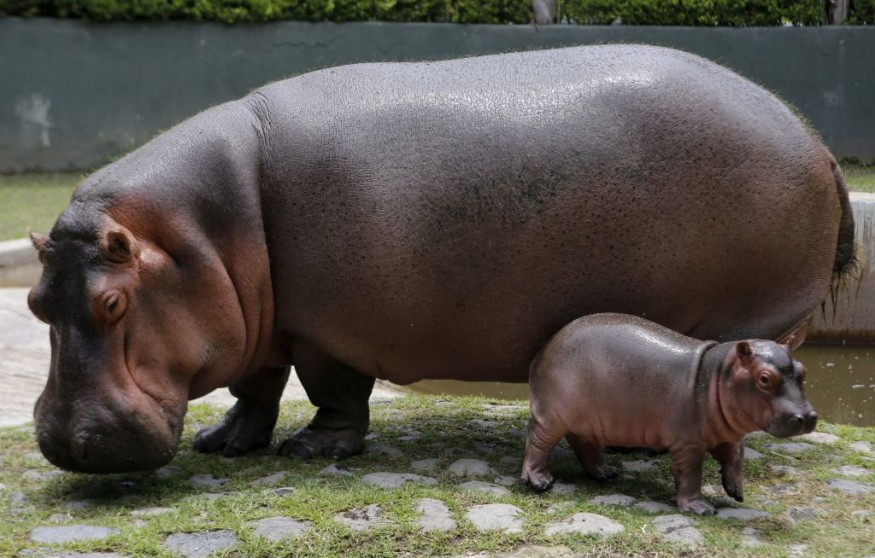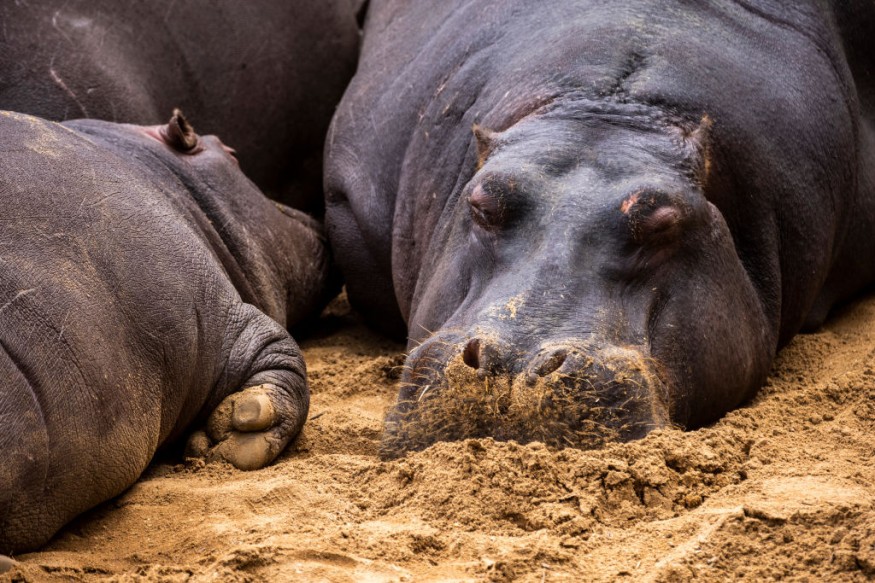Demand that hippos be included in the list of the world's most endangered species. Given the impact of the climatic crisis and poaching on populations, a new categorization would result in a complete prohibition on the international trade in animal body parts.

Declining Populations
Due to declining populations brought on by the climate crisis, poaching, and the ivory trade, hippos may soon be included in the list of species most in danger of extinction.
In sub-Saharan Africa, lakes and rivers are home to semi-aquatic animals, which have a population of 115,000-130,000. They face threats from habitat loss and degradation, the consequences of global warming, and the trafficking in animal parts, including their teeth and ivory, which is found there.
Per Cites, the Convention on International Trade in Endangered Species of Wild Fauna and Flora, hippos are also legitimately exchanged as hunting trophies and for economic gain.
Ten west African nations, including Togo, Gabon, and Mali, have recommended that hippos be accorded the highest level of protection under Cites by being included under appendix I of the convention before the next Cites Cop in Panama in November of this year. Since hippos are already classified as an appendix II species, they are not necessarily in danger of becoming extinct, but they may if unrestricted commerce continues.
In Hopes of Preventing Extinction

To prevent the extinction of the species, if passed, it would result in a complete international prohibition on the trading of hippo body parts and ivory. From 2009 to 2018, it is believed that at least 77,579 hippo parts and goods were exchanged lawfully.
The IUCN red list categorized hippos as vulnerable to extinction in 2016, citing local decreases, mainly in west Africa, which caused concern about the species' future in parts of the 38 nations in Africa where it is located.
One of the biggest terrestrial creatures in the world, male hippopotamuses may weigh up to 1,800 kg and are frequently seen in vast herds. The animals are particularly susceptible to overexploitation because of their lengthy eight-month gestation periods and the fact that females don't achieve sexual maturity until they are nine or ten years old.
Hippos have been neglected as a species of conservation concern, according to Rebecca Lewison, co-chair of the IUCN SSC hippo specialist group, because of their high population densities, which might create the appearance that there are many of them in the wild. However, during the past 20 years, the population has significantly decreased.
"Hippopotamus habitat loss and degradation pose the largest concern. According to the expert, common hippos depend on fresh water to thrive, which frequently puts them at odds with nearby populations who also use it for agriculture, energy production, fishing, and residential development.
"Hippo-human confrontations are increasing, especially in west Africa where populations of common hippos are dwindling quickly. Unfortunately, hippo-human confrontations lead to both hippo and human deaths, and they have exacerbated a related issue of unrestricted hunting for hippo flesh and ivory found in their canine teeth.
The ideas are unlikely to impact the small number of hippos that may be found in Colombia and were formerly part of drug lord Pablo Escobar's collection. According to many ecologists, these are invasive species and should be eradicated.
The Cites secretariat will analyze the proposal to determine if hippos fulfill the requirements of appendix I and will then provide a recommendation based on expert evidence.
Endangered Species List
Keenan Stears, an ecologist from the University of California Santa Barbara who spends a portion of the year in the South African Kruger National Park, said he favored the proposed listing due to the significant function hippos provide in ecosystems. "A major fraction of hippos are found in rivers that have significantly decreased river flow. He added that threats like the degradation of agricultural habitats are a major problem.
However, Stears asserted that populations might stabilize under ideal circumstances. If there is adequate greenery, they may recover rather fast. Rapid population growth would be acceptable in any protected area.
According to John Scanlon, who served as Cites' secretary general from 2010 to 2018, the upgrade to appendix I would criminalize bushmeat hunting and outlaw all commercial trading in hippos. "Whether it's flesh, teeth, or skin, any international commercial exchange would be forbidden.
Many organizations will give their opinions on the idea, and he predicted it would be a significant problem. Only around 1,500 species are included in Appendix I.
Related Article : Animal Sanctuary Focuses on Taking Care of Endangered Pangolins
For more updates about the latest animal news, don't forget to follow Nature World News
© 2025 NatureWorldNews.com All rights reserved. Do not reproduce without permission.





